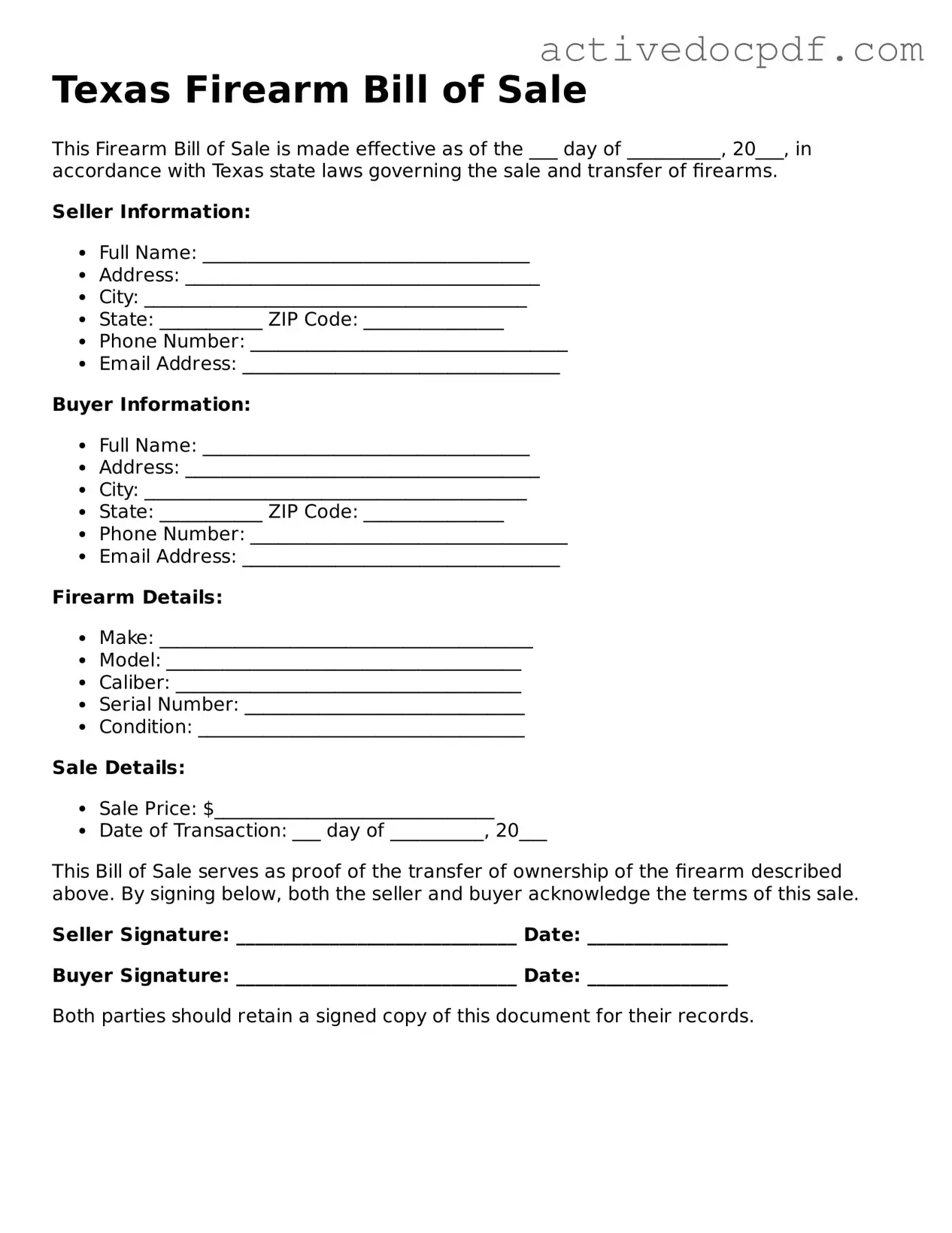Legal Firearm Bill of Sale Document for Texas State
A Texas Firearm Bill of Sale form is a legal document that records the sale or transfer of a firearm between two parties. This form serves as proof of ownership and includes important details about the transaction, such as the buyer's and seller's information, the firearm's description, and the sale date. Having this document can help protect both parties in case of any future disputes or legal issues regarding the firearm.
Edit Form Online
